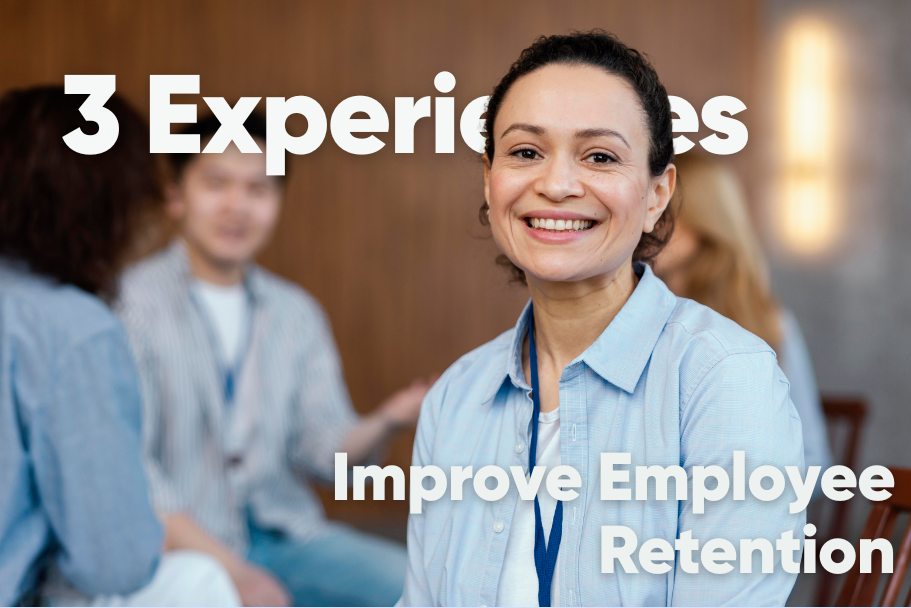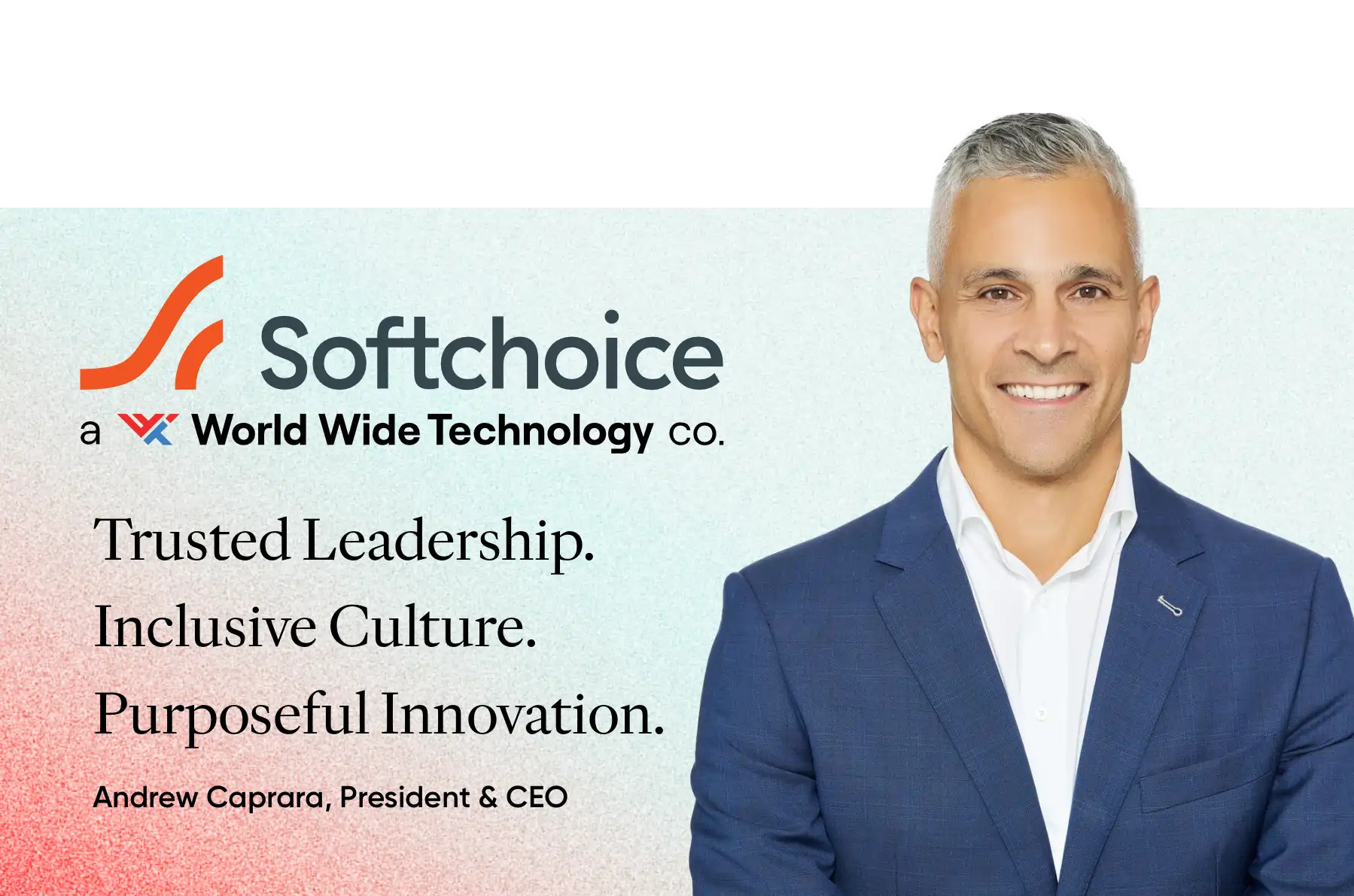
Company Culture, Employee well-being
Key Takeaways:
- Fairness Drives Retention: 96% of employees at top workplaces say people are treated fairly regardless of physical or mental condition—20 percentage points higher than typical Canadian workplaces.
- Pay Equity as an Inclusion Signal: Only 53% of employees in typical workplaces believe they are paid fairly, compared to 78% in top certified organizations, highlighting a key barrier to belonging.
- Design Impacts Participation: Gensler outlines how inclusive physical design encourages return-to-office engagement and supports diverse employee needs.
- Belonging Boosts Engagement: Great Place To Work Canada identifies bias-free practices and barrier removal as key to building a culture where employees feel connected and able to contribute.
Workplace accessibility is often associated with physical infrastructure. While that’s an important starting point, building a truly accessible environment means addressing a broader set of needs—many of which go unseen. From digital inclusion to flexible job design, removing barriers requires intention, planning, and a long-term commitment to equity.
This article explores how organizations can approach accessibility and mobility as a strategic priority, not just a legal or compliance issue. It also looks at practical ways to make the workplace more accessible to all employees, including those with visible and invisible disabilities.
Rethinking Accessibility Beyond Compliance
Laws and building codes play a role in defining the minimum standards for accessibility, but they often don’t reflect the day-to-day experiences of employees. Elevators, ramps, and automatic doors are essential, but they are only part of the picture. Accessibility must also account for:
- The tools people use to do their jobs
- The way meetings are conducted
- How roles are structured and evaluated
- The systems used for hiring, onboarding, and advancement
Organizations that take this broader view are better positioned to remove structural and cultural obstacles that can prevent people from fully participating in the workplace.
In fact, laws such as the Americans with Disabilities Act (ADA) mandate accessibility, “true disability inclusion goes beyond compliance—it fosters an environment where employees with disabilities feel valued, supported, and empowered to contribute fully” (Diversity.com). This distinction underscores the need for strategy, not just accommodation.
The Impact of Inaccessible Workplaces
Inaccessibility affects more than just a few individuals—it impacts team productivity, talent retention, and overall engagement. When employees encounter friction in their day-to-day tasks or feel excluded from key conversations, the result is often disengagement. In contrast, accessible environments contribute to a culture where employees can focus on their contributions rather than navigating barriers.
Barriers can be physical, digital, procedural, or attitudinal. Some common examples include:
- Software that isn’t compatible with screen readers
- Lack of closed captioning on internal video content
- Rigid job descriptions that don’t account for accommodations
- Inflexible work hours or return-to-office policies
- Negative assumptions about people’s abilities
Over time, these barriers can shape whether people feel valued, seen, and supported. A strong indicator of inclusive workplace design is fairness. According to Great Place To Work® Canada data, 96% of employees at top certified workplaces say people are treated fairly regardless of physical or mental condition, compared to 76% at typical Canadian workplaces. This signals that trust-based cultures prioritize dignity and accessibility at every level.
Creating a Strategy That Centers Accessibility
Accessibility is not a one-time project—it’s an ongoing practice. Creating a more accessible organization begins with a clear understanding of current experiences. Gathering feedback directly from employees is an effective first step. Anonymous surveys, one-on-one interviews, and feedback sessions can help reveal what’s working and where changes are needed.
Once there is a clearer picture, the next step is to embed accessibility into broader workplace strategy. That includes:
1. Leadership Alignment: Leadership must view accessibility as a business priority. When executives and managers speak openly about inclusion and take accountability for progress, it sends a strong message that accessibility matters across the organization.
2. Policy and Process Review: Regularly reviewing internal systems—such as hiring, onboarding, promotion criteria, and leave policies—can help remove outdated or exclusive practices. Ensuring job postings use plain language and that interview processes accommodate different needs is a strong starting point.
3. Technology and Tools: Digital accessibility is often overlooked but can be one of the most common barriers. Make sure internal tools are compatible with assistive technologies, that content follows accessibility guidelines (e.g., WCAG), and that updates are regularly tested for inclusivity.
4. Education and Awareness: Offering training on disability inclusion, accessibility etiquette, and unconscious bias helps create a more informed workforce. This isn’t about one-off workshops—it’s about building awareness into onboarding, leadership development, and ongoing learning programs.
Designing for Mobility and Flexibility
Workplace mobility isn’t just about physical movement—it’s also about flexibility in how, when, and where people work. For many employees, especially those managing chronic conditions or caregiving responsibilities, rigid schedules or environments can create unnecessary stress.
Organizations can remove some of these barriers by:
- Offering hybrid or remote work options
- Allowing flexible start and end times
- Creating quiet spaces for focus or recovery
- Supporting ergonomic assessments and equipment needs
- Encouraging outcome-based performance evaluations rather than presenteeism
These practices not only support employees with specific needs—they benefit the entire workforce by promoting well-being and trust.
According to Forbes, “true inclusiveness means embedding accessibility in all workplace processes.” Prioritizing accessibility in design and operations not only benefits disabled employees—it helps strengthen the organization as a whole.
Similarly, Great Place To Work Canada identifies breaking down barriers and eliminating biases as critical steps in building a workplace where everyone feels connected. When employees experience a sense of belonging, they are more likely to participate fully, share ideas, and stay engaged over time.
Involving Employees in the Process
Accessibility strategies are most effective when they’re shaped by the people they’re meant to support. That means listening to employees with lived experience and involving them in decision-making processes. Employee resource groups (ERGs), accessibility councils, and anonymous suggestion programs can provide essential input.
It’s also important to normalize the process of requesting accommodations. Employees should understand how to ask for support, who to speak to, and what they can expect during that process—without fear of stigma or penalty.
Measuring Progress
As with any workplace initiative, tracking progress is essential. Organizations can evaluate the impact of their accessibility efforts by:
- Monitoring employee experience data related to fairness and belonging
- Reviewing promotion and retention data across different employee groups
- Gathering feedback on tools, policies, and communication methods
- Conducting internal accessibility audits
This ongoing evaluation helps identify gaps and build a stronger case for future investments. For example, pay transparency and equity are vital markers of accessibility strategy maturity. Yet only 53% of employees in typical Canadian workplaces believe they are paid fairly, compared to 78% at top certified organizations—a gap that points to deeper issues of inclusion and access to opportunity (Great Place To Work® 2021 Global Employee Engagement Study).
As noted by Gensler, inclusive design will continue to shape the future of workspaces: “Designers can play a vital role in creating inclusive spaces that are welcoming of all people and all abilities.” This reflects a broader movement toward environments that respond to real human needs—not just architectural checklists.
Accessibility Is Good Business
Improving accessibility is not just about inclusion—it’s about building stronger, more resilient organizations. When employees can fully engage without barriers, they are more likely to stay, grow, and contribute at a high level.
A strategic approach to accessibility helps companies tap into a wider talent pool, meet evolving expectations from employees and customers, and build cultures that reflect care and accountability.
Removing barriers at work is a long-term commitment—but one that delivers value across the business.
Tools & Resources
- Trust Index™ Employee Feedback Survey: This research-backed survey helps identify employee experiences related to fairness, accessibility, and inclusion—critical insights for designing barrier-free workplaces.
- Culture Consulting: Supports organizations in identifying and removing structural and cultural obstacles by using a data-informed approach to build inclusive, high-trust environments.
- Diversity and Inclusion: Offers tailored consulting to help organizations build equitable policies, address accessibility gaps, and create a measurable inclusion strategy that aligns with business goals.
- Leadership Development: Helps organizations strengthen leader behaviours that influence accessibility, flexibility, and fairness—key drivers of an inclusive and engaging culture.
Feedback
We value your feedback! Your insights are crucial to helping us create meaningful content. Did the strategies in this article inspire new ways to remove barriers and build accessible workplaces in your organization? Are there specific challenges you'd like us to address? Share your suggestions or ideas with us. Together, we can develop resources that truly make a difference. Have feedback? Fill out this form by clicking here.
Get Certified
Want to know how your people feel about the accessibility and inclusiveness of your workplace? Get Certified today and learn the answer to this question and gain many more insights along the way.
Frequently Asked Questions:
What counts as a workplace accessibility barrier?
Barriers can be physical, digital, procedural, or cultural—anything that prevents full participation, such as outdated tools, rigid schedules, or inaccessible policies and spaces.
How can I assess accessibility gaps in my workplace?
Start by gathering employee feedback using tools like the Trust Index™ Employee Survey. It provides clear insights into fairness, inclusion, and accessibility.
Does accessibility only apply to employees with disabilities?
No. Accessibility benefits everyone, including caregivers, older workers, and those with temporary conditions or mental health needs. It supports a more flexible and inclusive work culture for all.
How can leadership play a role in accessibility?
Leaders set the tone by prioritizing inclusive policies, modeling flexibility, and being accountable for workplace equity. Their support is essential for long-term accessibility progress.
Where can I learn how employees experience our workplace culture?
Getting Certified through Great Place To Work® is a data-driven way to understand how employees feel about inclusion, fairness, and belonging in your organization.






